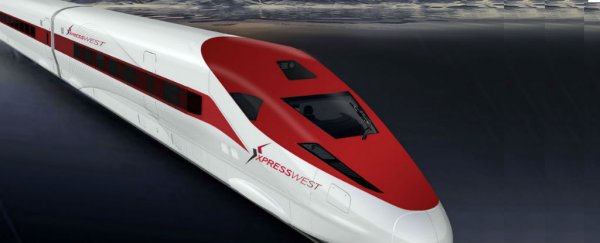Americans can look forward to zooming between LA and Las Vegas at 240 km/h in a new high-speed bullet train that's set to whittle the 370-kilometre trip down, from 4 hours in a car to just 80 minutes by train.
That's only slightly longer than the hour's flight it takes to get there, except you'll have the added bonus of not having to deal with airport nightmares. Facilitated by a partnership between a private US venture and a China Railway Group-led consortium, construction on the so-called XpressWest is expected to begin in late 2016.
The project, which took four years of negotiations to finalise, is tipped to cost more than US$7 billion - all of which is coming from the private sector right now, with US government loans yet to be approved. There's no word yet on when the project is expected to be operational.
This will be the first Chinese-made bullet train in North America, and the idea is that both countries will benefit from the project: the US in better connecting two of its biggest cities, and China in being given the opportunity to inch ahead of Japan as the world's leading bullet-train innovator.
"This is the first high-speed railway project where China and the US will have systematic cooperation," Yang Zhongmin, a deputy chief engineer with China Railway Group, said at a press conference in Beijing. "It shows the advancement of China-made high-speed railways."
This won't be the first bullet train to run between major American cities. As Bryan Lufkin reports for Gizmodo, two major high-speed rail plans were announced earlier this year:
"A private venture in Texas that proposes linking Dallas and Houston - two of America's fastest-growing urban centres - with a replica of Japan's famed shinkansen, or bullet train. Meanwhile, California officially started rail construction on its own high-speed rail project in January, despite having not yet chosen a country's trains to model its system on."
Back home, China has built more than 17,000 km of domestic high-speed rail lines, according to the local Xinhua News Agency.
Just as the proliferation of smartphones over the past decade has brought the world closer than ever before on a digital landscape, the coming decades look set to strengthen our physical connections, with incredible advances in transport technology promising to cut down travel times between even the most faraway places drastically. New York to London in 3 hours, anyone?
